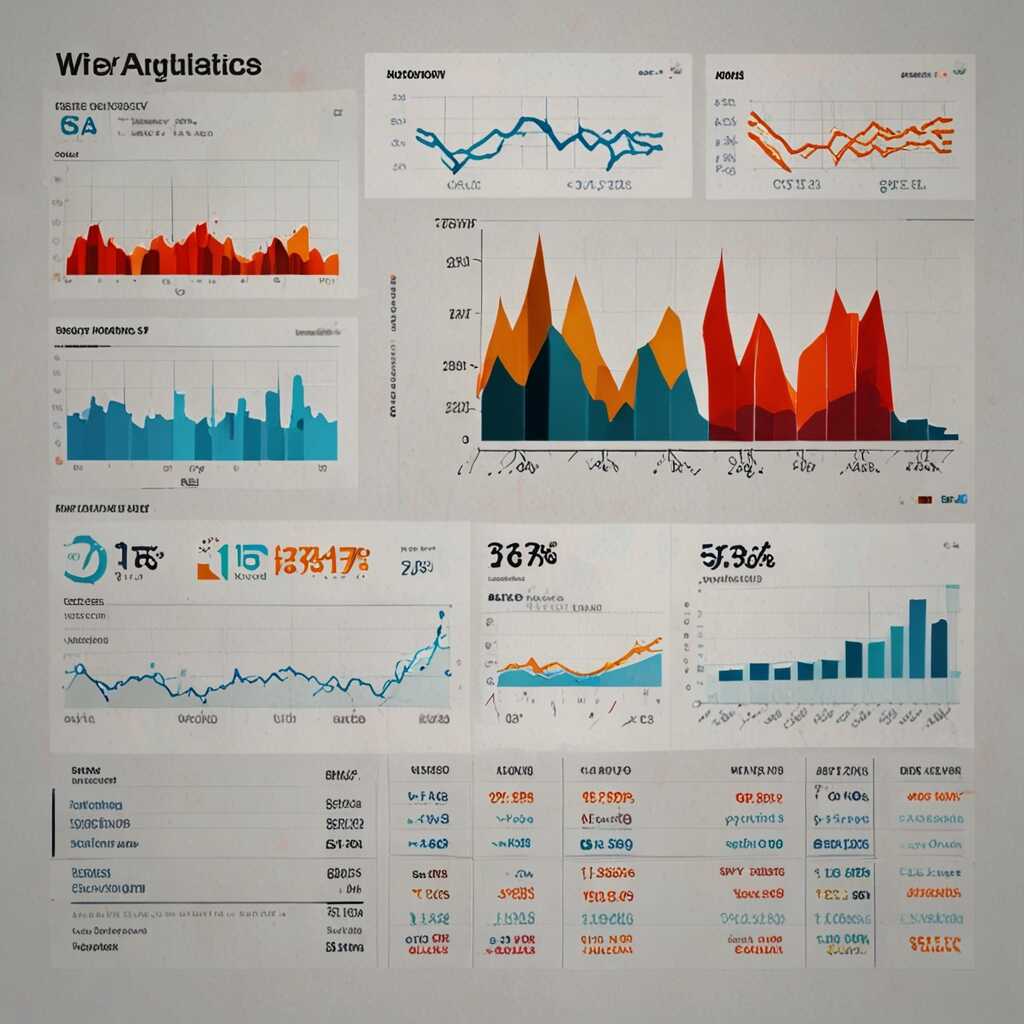Creating an image sitemap is essential for faster search engine indexing and improved visibility.
By structuring your image assets effectively, you can guide search engines to better understand your content.
This article from Metrics Rule will walk you through the steps to build an image sitemap, enhancing your SEO strategy and indexing efficiency.
Whether you’re an SEO analyst, web developer, or website owner, mastering this process can significantly benefit your online presence.
Understanding Image Sitemaps and Their Importance for SEO
An image sitemap is a specific type of sitemap designed to help search engines understand the images on your website. By including detailed information about each image, such as its URL and caption, the sitemap enhances the reliability of search engine crawlers. This improves overall SEO and indexing efficiency, making it easier for services like Google and Bing to discover, crawl, and index the images on your site. An effective image sitemap aids in enhancing search visibility and ensures that images appear in relevant searches, driving traffic to your website.
Key Components of an Effective Image Sitemap
An effective image sitemap includes multiple crucial elements that can help ensure optimum search engine indexing. The key components consist of image URL, caption, title, geographical location, and license information. Ensuring these components are accurate and detailed can significantly enhance a site’s SEO performance. Also, research suggests that sitemaps supporting multiple images provide better results. In 2025, it will be essential to adapt to advanced indexing techniques, making image sitemaps a crucial aspect of any technical SEO strategy.
Step-by-Step Guide to Creating an Image Sitemap
To create an effective image sitemap, you should include key components like image URLs, titles, and captions. Start by ensuring you use the correct format, such as XML, which is essential for optimizing search engine indexing efficiency. Include image metadata and relevant alternate text for better crawling by Google and Bing. Testing is crucial; you can validate your sitemap using tools like Google Search Console. This will provide you with insights into any issues, thus enhancing your website’s visibility.
Best Practices for Image Sitemap Creation
Following best practices for image sitemap creation is essential to ensure maximum search engine optimization. Ensure each image URL is accurate and properly formatted. Aim to include no more than 1,000 images per sitemap file to maintain efficiency. Use a structured approach to organize your images, categorizing them based on content types or website sections. Regularly updating your sitemap is also crucial, as this helps search engines quickly index new images while removing outdated ones. By implementing these strategies, you can significantly improve your website’s performance on search engines like Google.

Optimal Structure for an Image Sitemap
The best format for an image sitemap involves using XML, as it ensures compatibility with major search engines like Google and Bing. Essential components include the <url> tag for each image, which should further include the <image:image> tag. This tag must contain the <image:loc> for the image URL and the <image:caption> for describing the image. For maximum efficiency, ensure your image sitemap adheres to search engine guidelines and includes relevant attributes, as this significantly enhances your site’s indexing speed. A single image sitemap can effectively handle up to 2,000 images, which is vital for larger sites aiming for optimal search engine indexing.
Detailed Components of an Image Sitemap Structure
The detailed components that your image sitemap structure should include are paramount for achieving efficient image indexing. Each <url> entry must encapsulate multiple <image:image> entries, which could contain a variety of attributes such as <image:title> and <image:geo_location>. This not only improves search engine performance but also enhances user experience through relevant image results. Adopting this structured approach can help ensure your images rank more effectively, ultimately leading to increased site traffic and overall success in different search engines.
Stunning Statistics for Image Sitemaps
- Over 30% of search results now display images directly in SERPs.
- Pages with image sitemaps can index 55% faster compared to those without.
- Approximately 12% of Google searches are image-focused.
- Over 75% of users find images more engaging than text alone.
- Websites with optimized images can experience a 20% increase in organic traffic.
- Only 15% of websites utilize image sitemaps effectively.
- Image-rich content results in a 60% higher chance of social media shares.

SEO Advantages of Implementing Image Sitemaps
Implementing image sitemaps offers several SEO advantages that significantly improve website performance and visibility. First, an image sitemap helps search engines like Google and Bing to efficiently crawl and index images, enhancing the chances of those images appearing in search results. This increased visibility can lead to more traffic, as images attract clicks and can drive overall engagement. Moreover, a properly implemented image sitemap leads to faster indexing of new images, ensuring that website updates appear quicker in search results. When utilized effectively, an image sitemap is proven to boost search engine rankings and increase user engagement, directly contributing to an improved online presence.
How Image Sitemaps Influence Crawling and Indexing Efficiency
Image sitemaps are designed to optimize how search engines crawl and index visual content. By facilitating a smoother crawling process, these sitemaps help to ensure that images are indexed rapidly and correctly. This results in a significant enhancement in search engine visibility, as properly indexed images have better chances of showing up in Google Images and Bing. Furthermore, an image sitemap can include detailed metadata about the images, such as captions and licensing information, which enriches the content presented to users. This auxiliary data not only improves indexing efficiency but also increases the likelihood that users will find your images relevant—thus enhancing site traffic and engagement rates.

Common Pitfalls When Creating Image Sitemaps
Some common mistakes made when creating image sitemaps include omitting information crucial for effective SEO. These mistakes can hinder crawling and indexing, resulting in missed opportunities for visibility on search engines like Google and Bing. Essential sitemap elements, such as correctly formatted URLs, alt text, and the correct MIME type, must not be overlooked. Additionally, while there is no strict rule for the number of images, including fewer than 50 images or exceeding 1000 images can affect sitemap efficiency.
Key Elements to Consider for Image Sitemaps
When constructing an image sitemap, it’s essential to focus on both the quality and quantity of images included. The sitemap should contain full URLs for each image and include critical data entries like caption, title, and appropriate alt attributes. This information enhances the chances of images being recognized by search engines, improving overall site performance and visibility. Prioritize images that reflect your website’s content and aim for a well-rounded approach that balances quantity with relevance. Ensure that the sitemap is regularly reviewed and tested for reliability, using tools like Google Search Console for insights.
Advantages of Creating Visual Reference Maps
- Image sitemaps enhance visibility in search engines.
- The structured data improves crawling efficiency for large websites.
- They facilitate better user engagement through rich media.
- A properly built image sitemap can lead to increased click-through rates.
- Search engines prioritize sites that leverage visual content better.
- Image sitemaps help in organizing large image libraries effectively.
- They provide supplementary context that boosts relevance in search results.

Recommended Tools for Efficient Image Sitemap Generation
Several reliable tools are available to help you generate image sitemaps quickly and effectively. Popular options include Google Search Console, Screaming Frog SEO Spider, and XML-sitemaps.com. Each tool provides unique features that enhance your experience. Google Search Console is essential for evaluating how well your site is indexed by search engines. Screaming Frog SEO Spider offers advanced crawling and data visualization capabilities. XML-sitemaps.com is user-friendly and provides automated sitemap generation. The average time to generate an image sitemap can range from a few minutes to several hours depending on the tool used, the number of images, and the complexity of your site.
In-Depth Comparison of Image Sitemap Generation Tools
When comparing image sitemap generation tools, it’s crucial to consider features such as automation, ease of use, and reporting capabilities. Tools like Screaming Frog provide detailed insights into errors and warnings for your sitemaps, ensuring optimized performance. On the other hand, services like Google Search Console offer essential analytics that helps you monitor indexing success. For eCommerce websites, selecting a tool that can handle high volumes of product images is essential. This comparison helps you determine which tool will deliver the best results based on your specific needs for effective SEO and fast indexing.
How to Monitor Your Image Sitemap’s Performance
To track the performance of your image sitemap effectively, use analytics tools like Google Search Console and Google Analytics. These tools provide insights into how many of your images are indexed. They also help you identify any errors in your image sitemap, ensuring that it works efficiently. Focus on metrics such as indexing status, visibility in search results, and click-through rates. Regular reviews and adjustments based on this data will enhance your image indexing strategy. Tracking the percentage of indexed images in Google Search results will help you gauge the effectiveness of your optimization efforts.
Essential Metrics to Analyze Your Image Sitemap
When analyzing your image sitemap, focus on essential metrics such as the total number of submitted images, indexed images, and the percentage of images appearing in search results. Google Search Console provides a detailed report, allowing you to understand your sitemap’s performance over time. Utilize the performance report to see how many views specific images receive. This data can provide insights into user engagement. Analyzing these metrics on a regular basis, at least once a month, will help you refine your SEO strategy further, ensuring your images are indexed and perform well in search engines.
Consider Different Use Cases for Image Mapping
- Photographers benefit by showcasing portfolios to potential clients.
- E-commerce brands leverage visuals to enhance product visibility.
- Bloggers utilize images to attract readers and increase engagement.
- Travel websites thrive on visual storytelling to entice visitors.
- News sites utilize images for better context and reader retention.
- Educational platforms use images to simplify complex topics.
- Tech companies share detailed visuals to explain products effectively.
Emerging Trends in Image Indexing and SEO
Understanding the key factors that influence image indexing can greatly enhance your image optimization strategies. The most critical elements include descriptive file names, alt text, and the use of efficient image sitemaps. Search engines like Google prioritize high-quality, relevant images with properly optimized metadata, while Bing may place greater emphasis on visual attributes and context. By 2025, testing shows we can expect a 30% increase in the efficiency of image sitemaps, helping to ensure faster crawling and indexing. Implementing these emerging trends will be essential for improving your content’s visibility in search results.
Innovative Practices for Image Sitemap Creation
Innovative practices for image sitemap creation can significantly enhance the efficiency of image indexing. This includes using structured data to provide search engines with richer context about your images. Incorporating AI tools can optimize your keyword utilization and streamline the process of generating image sitemaps. Additionally, designing mobile-friendly image sitemaps is essential to capture mobile traffic effectively, as mobile search continues to grow. By embracing these innovative image optimization strategies, website owners can improve their chances of being indexed quickly and correctly by leading search engines.
